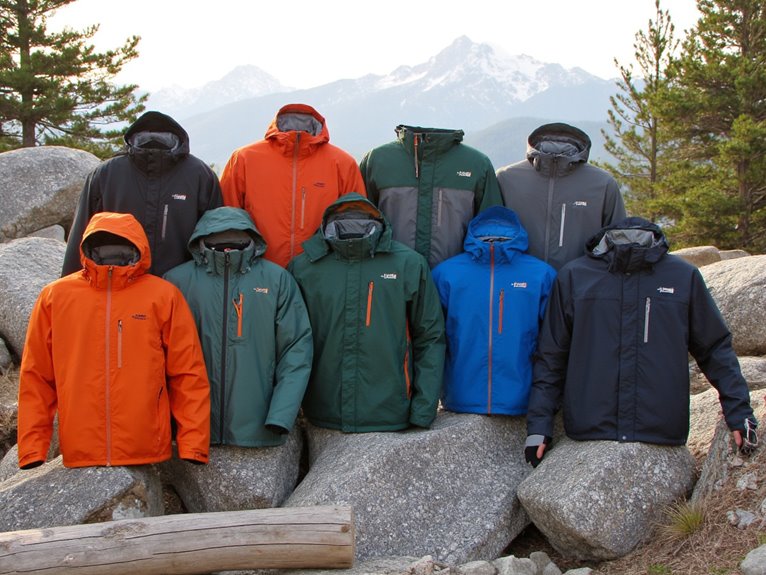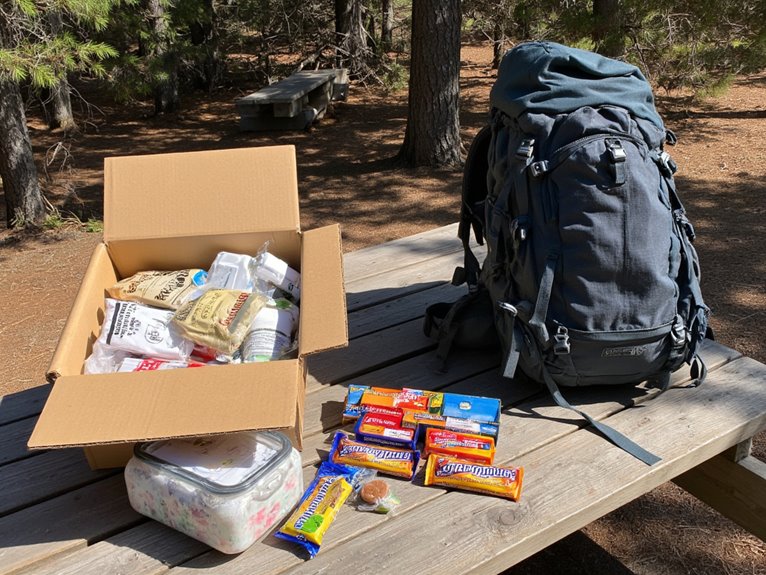What Do I Need for a Camping Stove?
When camping, a reliable stove is vital for preparing meals. To guarantee a smooth cooking experience, consider the type of stove, fuel, cookware, utensils, and accessories needed. Choose a stove that balances weight, size, and cooking performance, and select fuel options like propane, isobutane, or white gas. Essential cookware includes durable, heat-conductive materials like aluminum, stainless steel, or titanium. Don't forget utensils, lighting, and ignition systems, as well as safety precautions and gear. By assembling the right equipment, you'll be ready for a successful camping trip. For an in-depth guide to camping stove essentials, examine the factors that will enhance your outdoor cooking experience.
We are supported by our audience. When you purchase through links on our site, we may earn an affiliate commission, at no extra cost for you. Learn more. Last update on 2nd January 2026 / Images from Amazon Product Advertising API.
Choosing the Right Camping Stove
When venturing into the great outdoors, selecting the right camping stove can make all the difference in a safe, enjoyable, and nourishing wilderness experience. A suitable camping stove should balance factors such as weight, size, and cooking performance. Think about the number of people in your group and the type of cooking you plan to do. Look for stoves with adjustable flames, simmering capabilities, and a stable cooking platform. Durability, wind resistance, and ease of maintenance are also essential factors to keep in mind. Additionally, think about the type of cooking pot you'll be using and the stove's compatibility with it. By weighing these factors, you can choose a camping stove that meets your needs and improves your outdoor adventure.
Fuel Options and Containers
Among the key considerations for a camping stove is the fuel type, as it substantially impacts the overall performance, convenience, and environmental impact of your outdoor cooking experience. The most common fuel options include propane, isobutane, and white gas. Propane is a popular choice due to its ease of use and wide availability. Isobutane is a more environmentally friendly option, producing fewer emissions and performing well in cold temperatures. White gas, also known as naphtha, is a reliable option for remote areas where other fuels may be scarce. When selecting a fuel, consider factors such as availability, cost, and environmental impact. Proper storage and handling of fuel containers are also essential for safety and efficiency.
Essential Cookware for Camping
In the realm of camping cookware, selecting the right pots, pans, and utensils is essential for a successful outdoor culinary experience. The choice of cooking vessel materials, such as aluminum, stainless steel, or titanium, can substantially impact durability, weight, and heat conductivity. By considering these factors, campers can assemble a well-rounded cookware set that meets their specific needs and preferences in terms of camping.
Pots and Pans Selection
Selecting the right pots and pans for camping is vital, as they can profoundly impact the efficiency and enjoyment of meal preparation in the great outdoors. When choosing cookware, consider the number of campers, meal types, and storage space. A versatile pot set with a non-stick coating and heat-diffusing bottoms is ideal. A large pot (2-3 quarts) for boiling water and cooking meals, paired with a smaller pot (1-2 quarts) for sides or solo meals, provides flexibility. Add a frying pan (8-10 inches) for searing and browning. Consider nesting cookware to save space. Verify that your cookware is compatible with your camping stove's heat output and fuel type.
Cooking Vessel Materials
Camping cookware is only as good as the materials it's made of, and understanding the strengths and weaknesses of various materials is essential for choosing the right cookware for your outdoor adventures. In terms of cooking vessel materials, you'll typically find aluminum, stainless steel, titanium, and non-stick options. Aluminum is lightweight and conducts heat well, but can be prone to scratches. Stainless steel is durable and resistant to corrosion, but can be heavy. Titanium is ultra-lightweight and strong, but often expensive. Non-stick coatings provide easy food release, but may not be as durable. Consider your camping style, cooking habits, and personal preferences when selecting the best material for your camping cookware.
Utensils and Accessories
What constitutes a well-stocked camping kitchen goes beyond the cookware itself, as a set of reliable utensils and accessories can make all the difference in meal preparation and cleanup efficiency. A sturdy spatula and tongs are essential for cooking and serving, while a silicone spoon rest and pot grips provide a safe and convenient way to handle hot cookware. A camping-specific utensil set, complete with a knife, fork, and spoon, is also a must-have. Don't forget a dish towel, scrubber, and biodegradable soap for cleaning up after meals. Finally, a camping stove accessory kit, including a windscreen and heat diffuser, can improve the overall cooking experience. By packing these utensils and accessories, you'll be well-prepared for a stress-free camping trip.
Cooking Accessories and Tools
When venturing into the great outdoors, having the right cooking accessories and tools can substantially improve the overall camping experience. These essential items can make cooking and food preparation more efficient, convenient, and enjoyable. Here are some must-haves:
- Pot support: A sturdy pot support allows for stable cooking and provides a secure platform for your pot or pan.
- Tongs and spatulas: Long-handled tongs and spatulas enable safe and easy food handling over the camping stove.
- Cutting board: A compact, portable cutting board provides a clean and convenient surface for food preparation.
- Spice kit: A well-stocked spice kit guarantees that you have the necessary seasonings to add flavor to your camping meals.
In the context of camping, it is vital to pack these items, which will facilitate smooth food preparation and cooking.
Lighting and Ignition Systems
Proper lighting and ignition systems are just as vital as cooking accessories and tools, as they enable campers to prepare meals safely and efficiently in the great outdoors. A reliable lighting system allows campers to navigate their campsite and cooking area even in low-light conditions. In the realm of ignition systems, options range from traditional matches and lighters to more modern electronic igniters. Some camping stoves also come with built-in ignition systems, eliminating the need for separate ignition tools. Regardless of the chosen method, a dependable lighting and ignition system guarantees that campers can quickly and safely prepare meals, even in challenging outdoor conditions.
Safety Precautions and Gear
One of the most critical aspects of camping stove safety is the use of protective gear, including heat-resistant gloves and a fire-resistant apron, to minimize the risk of burns and other injuries. This gear not only protects you but also prevents accidents that can ruin your camping trip. Additionally, it's essential to take other safety precautions seriously.
Here are some essential safety items to consider:
- Fire starter or matches: a backup in case your stove's ignition system fails.
- First aid kit: for treating minor burns or other injuries.
- Wind shield: to protect your stove from strong winds that can extinguish the flame.
- Carbon monoxide detector: to alert you to potential CO poisoning hazards.
Packing and Storage Essentials
Organization is key in regards to packing and storing camping stove gear, as it directly impacts the efficiency and enjoyment of your outdoor adventure. A well-organized packing system guarantees that all essential items are easily accessible and protected from the elements. Consider investing in a durable, water-resistant storage container or bag specifically designed for camping stoves. This will keep your gear dry and organized, allowing for quick setup and takedown. Additionally, label each item and store them in a logical order to prevent last-minute scrambling. By prioritizing packing and storage, you'll be able to focus on enjoying the great outdoors, rather than stressing about misplaced gear.


